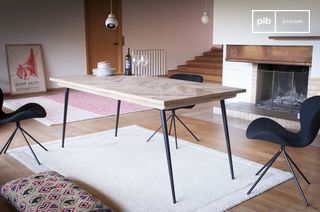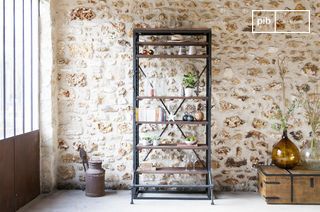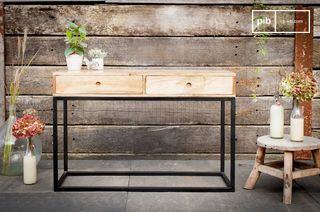Mango wood
The Mango category includes furniture made from solid mango wood. This material has a medium density and a visual structure marked by natural variations in shade. Each piece reveals nuances ranging from light brown to dark gray, with occasional veined or contrasting areas. Mango wood is used for tops, fronts and bases, in simple forms or more elaborate assemblies. It blends into sober compositions, often combined with metal or other species. read more >
Filters

Mango wood: material characteristics and use in furniture
Mango is a fast-growing wood, used in furniture once the tree no longer produces fruit. It offers a good compromise between strength and ease of shaping. Its density is medium: the wood is hard enough for trays and load-bearing structures, yet light enough for mobile or modest-sized furniture. Mango has an irregular fibrous structure, sometimes interspersed with knots or dark veins. It is generally used solid, rarely as a veneer, which reinforces the visual stability of volumes.
Visual reading and surface treatment
Visually, mango wood offers an extensive spectrum of nuances. Depending on sanding, treatment (oiled, waxed, lightly stained) and cut, variations can be subtle or marked. This makes it possible to introduce rhythm into a piece of furniture without resorting to an added pattern. Mango is not excessively shiny. It can be combined with black metal, brass or mineral surfaces to enhance the legibility of a design. In a room, mango furniture often plays an anchoring role, particularly when it comes to storage or low furniture (sideboards, benches, tables).
Furnishings, care and material combinations
Mango blends into sober interiors, where the material is visible without overload. It is suitable for living rooms, entrances, offices or bedrooms, depending on volume and type of finish. Wood requires little maintenance: a dry or slightly damp cloth is all that's needed to remove dust. For frequent use, an occasional application of oil can prevent the wood from drying out. Mango works in contrast with smooth surfaces (glass, painted metal) or as an extension of raw textiles (linen, bouclette). Its intermediate tone avoids overly pronounced visual breaks.
The *Mango* category presents furniture where the material plays a direct role in visual balance and usability. Wood is neither masked nor modified to the extreme: it acts as a stable volume and legible surface in functional compositions.
The *Mango* category presents furniture where material plays a direct role in visual balance and use




